Authors: Roger Moore
Bond On Bond (31 page)
I never met Ian Fleming. However, when I arrived in Jamaica to make
Live And Let Die
I was invited to visit Goldeneye, Fleming’s house on the north coast, where he wrote the Bond novels. It was a large sprawling bungalow, occupying a former donkey racecourse and set in fifteen acres of grounds. It was all painted white with large shuttered windows. It looked a bit like a hospital building from
Sanders of the River
. It still had his desk in place and various copies of his books dotted around the shelves. It was quite a humbling experience walking around and thinking, ‘This is where it all started.’
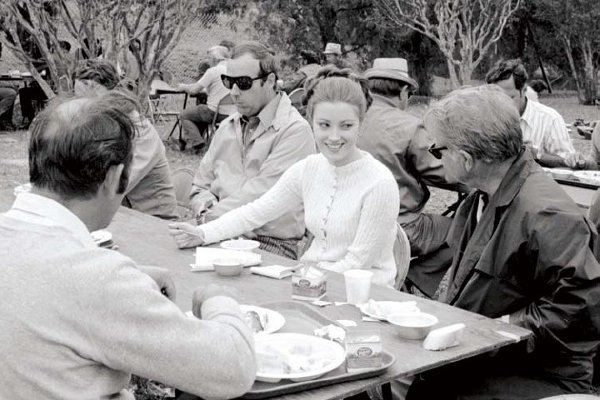
This was lunch after Harry took away the tablecloths and silverware. Guy Hamilton (in the sunglasses) doesn’t look too impressed, does he?
Incidentally, I did share Fleming’s view of
Dr. No
being a film of laughs. Cubby and Harry were perplexed when I said they had a fun picture on their hands. They thought it was a dark thriller.
Fleming saw only the first couple of Eon produced films, as sadly he died during the production of
Goldfinger
in 1964. He had witnessed only a little of the success his creation was about to achieve. Cubby Broccoli declared that Fleming’s name should be on the front title of every film, even after they had exhausted his novels as titles. In my case the above-the-title legend read:
‘Albert R. Broccoli presents Roger Moore as Ian Fleming’s James Bond 007 in …’
When Cubby passed away, his children Barbara and Michael declared that his name too would still appear above the title, hence you now see:
‘Albert R. Broccoli’s Eon Productions presents Daniel Craig as Ian Fleming’s James Bond 007 in …’
And nobody, but nobody, apart from the actor playing Jim, has their name above the title. Many have asked, but Cubby always said, ‘nobody is bigger than James Bond’.
There’s no arguing with that!
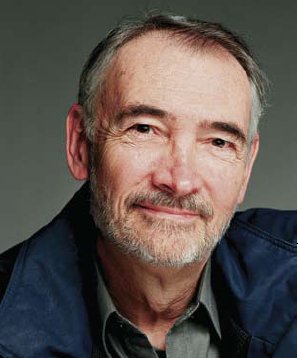
Dear Michael Wilson … I’d like to play a villain please. Kind regards, Roger Moore.
By the time I made my first Bond, the relationship between Cubby and Harry Saltzman was strained. So much so they divided their duties on each film –
Diamonds Are Forever
was largely overseen by Cubby, whereas
Live And Let Die
was, on the whole, Harry’s picture, and then Cubby took the main helm of
The Man With The Golden Gun.
Many newspaper reports had surfaced about the tensions and arguments between the two producers, and Guy Hamilton summed it up well to United Artists’ executives visiting the set: ‘I can work very happily with Cubby, and I can work very happily with Harry. But working with Cubby and Harry together is a nightmare.’
I liked them both greatly, but sometimes had to dodge the crossfire.
In an interview with the
Daily Mail
in 1973, Harry admitted that, with only five more Fleming stories left, he had every intention of getting out when the going was good. On 11 November that year another story, this time in the London
Evening Standard
, suggested that Harry had engaged lawyers to sell his share in Danjaq, the company he co-owned with Cubby, to Columbia Pictures.
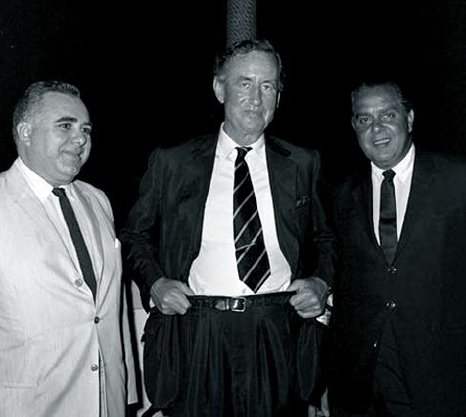
Ian Fleming with his two producers – Harry and Cubby.
Cubby had approval on any deal, and would have been aghast that his partner was contemplating bailing out and placing him in the hands of a distributor other than UA, who had bankrolled all the films to date.
Harry was undoubtedly in dire financial straits. Two of his more recent films –
The Battle Of Britain
and
Toomorrow
– were not the box office successes he had hoped for. Harry had invested heavily in these projects, as he had in a club in London and in buying Technicolor. He also began mounting a bid to buy Shepperton Studios. He used his collateral in Bond and Danjaq as security against bank loans – something his partnership agreement with Cubby specifically forbade. The banks started foreclosing, and Harry had no option but to sell. But to whom?
Harry started discussions with UA’s Arthur Krim. A week after
The Man With The Golden Gun
premiered, UA sealed a deal to buy Harry out – for a reported £20 million.
It was a deal – and a new partner – Cubby felt he could live with and he split from Harry, and not on particularly happy terms.
Jacqueline, Harry’s wife, sadly succumbed to cancer when we were filming
The Spy Who Loved Me
and Harry seemed to go downhill afterwards. He sold his beloved Buckinghamshire home, moved to the States, and all but withdrew from filmmaking. He did though own a controlling share of H.M. Tennent, the West End theatre company, and eventually made just two more films,
Nijinsky
in 1980 and
Dom Za Vesanje
nine years later.
In 1981, Cubby decided to invite Harry and his family to the premiere of
For Your Eyes Only
. The hatchet was well and truly buried and Harry commented on what a great job Cubby had done with Bond.
Harry passed away in Paris in 1994.
I have worked with most of the talented team of Bond production designers including Sir Ken Adam, Syd Cain, Peter Murton and Peter Lamont. They, along with Allan Cameron and Dennis Gassner, have established and developed the look of the movies. Undoubtedly the greatest influence has been that of Ken Adam – his sloping roofs, gigantic sets and wonderful blending of the futuristic and classic was revolutionary. On
Goldfinger
, his fictionalized vision of the interior of Fort Knox caused the American authorities to question their obvious breach of security – even they thought it was real.
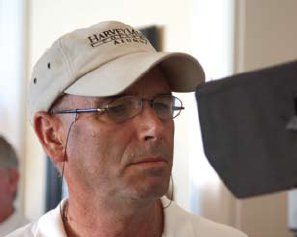
Martin Campbell has directed two in the series so far. Let’s hope he returns for the hat trick.
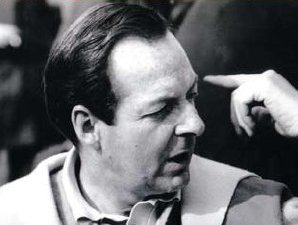
Guy Hamilton was in charge of four Bond films, including two of mine.
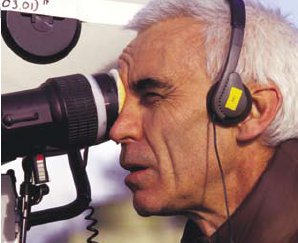
Lee Tamahori perhaps directed the most outlandish of all,
Die Another Day.
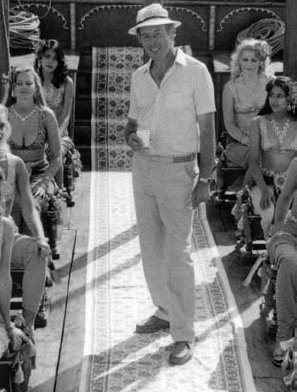
John Glen served as second unit diretor, editor and then became director, helming five 007 films, three of which were mine. Thanks, John.
Ken also changed the face of Pinewood’s lot for ever when he designed and built the huge 007 Stage. He and Cubby scoured the country looking for a facility big enough to house three nuclear submarines. They couldn’t find anything, so Cubby said, ‘Build it.’
In 1984, just prior to our commencing work on
A View To A Kill
, word came through that the 007 Stage was on fire. But how can a huge steel structure catch fire? It turned out that Tom Cruise’s film
Legend
was shooting on there and, during a lunch break, a gas canister exploded. Within minutes, the stage interior was alight and effectively melted.
Cubby later visited the site with production designer Peter Lamont and asked, ‘How long and how much to rebuild?’ Peter gave him an answer of sixteen weeks and £1 million. Cubby said, ‘OK, do it.’ The stage was re-opened and renamed the ‘Albert R. Broccoli 007 Stage’, in honour of Cubby.
Tragically, on 30 July 2006 during my Sunday lunch, I received a call to say ‘Pinewood is on fire’. I dropped my roast parsnips and made a few calls. It turned out to be the 007 Stage (again). During the set dismantling of
Casino Royale
, a blowtorch pilot light was left burning and – over the course of the weekend – a fire broke out and crept towards some gas bottles. In a matter of hours a black, molten mess was all that remained. Six months later, the third incarnation of our stage was opened.
